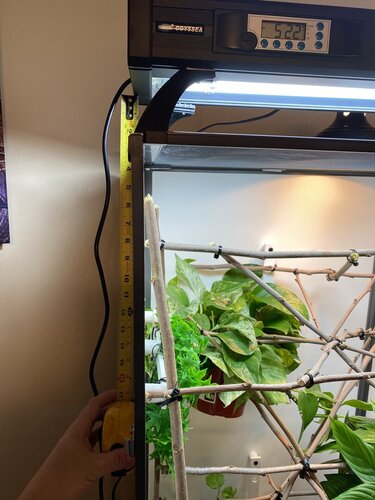Hi guys --
When helping new keepers transition from a compact UVB to a linear UVB, the go-to recommendation is a Reptisun 5.0 or an Arcadia 6%. My understanding is this is because this is the 'safer' option lowering the chances of overexposure. However, I use a 12% UVB with great success but I also have a solar meter so I know my UVI readings are where they need to be.
I'm mindful that the best way to know is with a solar meter but I'm also mindful that not everyone has one especially as a new keeper. Also mindful that there are a million factors that impact what UVB someone should use such as the way the enclosure is set-up, the age of the chameleon, species, their supplement schedule, etc.
I hear 6% for panthers and 12% for veileds -- but know of panther keepers who use 12% (like me) and veiled keepers who use 6% so I don't think this is a good way to dish out advice. I also hear 6% for lightly planted enclosures and 12% for heavily planted enclosures -- this is very subjective and might be hard for a new keeper to grasp.
So here is my question: Would you ever recommend a 10.0 or 12% UVB to a new cham keeper or to someone who doesn't have a solar meter? If yes, under what circumstances?
When helping new keepers transition from a compact UVB to a linear UVB, the go-to recommendation is a Reptisun 5.0 or an Arcadia 6%. My understanding is this is because this is the 'safer' option lowering the chances of overexposure. However, I use a 12% UVB with great success but I also have a solar meter so I know my UVI readings are where they need to be.
I'm mindful that the best way to know is with a solar meter but I'm also mindful that not everyone has one especially as a new keeper. Also mindful that there are a million factors that impact what UVB someone should use such as the way the enclosure is set-up, the age of the chameleon, species, their supplement schedule, etc.
I hear 6% for panthers and 12% for veileds -- but know of panther keepers who use 12% (like me) and veiled keepers who use 6% so I don't think this is a good way to dish out advice. I also hear 6% for lightly planted enclosures and 12% for heavily planted enclosures -- this is very subjective and might be hard for a new keeper to grasp.
So here is my question: Would you ever recommend a 10.0 or 12% UVB to a new cham keeper or to someone who doesn't have a solar meter? If yes, under what circumstances?









